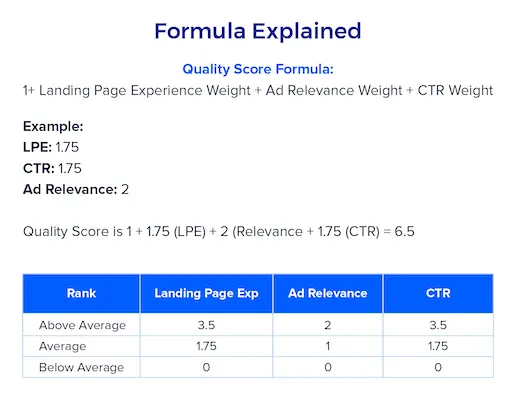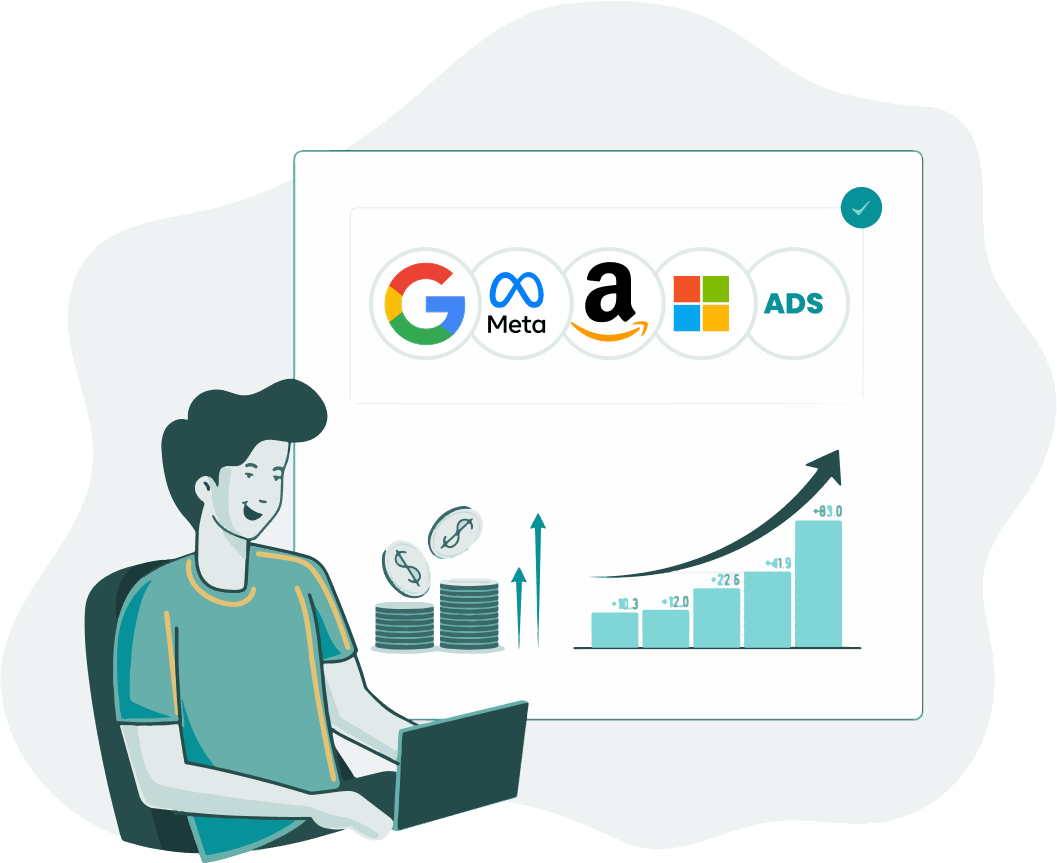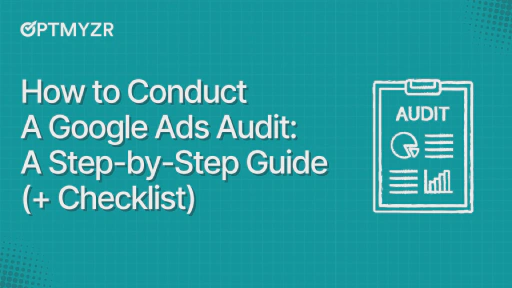Coke vs. Pepsi, ketchup vs. mustard, caring about Quality Score vs. ignoring it – some debates are as old as time itself.
With more advertisers relying on first- and third-party automation to deliver great performance with less hassle, everybody has access to the same bid management tools. The assumption is that ad rank is impacted solely by bids and so the effort that goes into raising Quality Score (QS) is less important or rewarding.
Now, before going into the details, let’s back up a bit and understand what quality score actually is and the factors that contribute to it.
What Is Quality Score?
According to Google,
Quality Score is an estimate of the quality of your ads, keywords, and landing pages. Higher quality ads can lead to lower prices and better ad positions.
How is Quality Score calculated?

Image courtesy Instapage.com
Factors affecting Quality Score
Advertisers tend to depend largely on bidding strategies to gain a winning position in the ad auction, but overlooking Quality Score can actually harm your position. That’s because the things that improve your QS also make your ad more appealing to search users:
1. Ad Relevance
This component looks at how close your ad is to the search query. Google is looking at how closely the message in your ad matches the search term and its intent. This component is something you can manage more easily than the others on this list.
2. Expected Click-Through Rate (CTR)
This component is based on the historical performance of your keywords and ads. Google estimates how likely your ad is to be clicked based on things like ad text relevance, ad creativity, keyword relevance, and historical performance.
3. Landing Page Experience
Are your customers happy with what they see after clicking on your ad? Google is looking at how relevant your landing page is to the keyword and ad. But it also takes into account factors like transparency, ease of navigation, original content, and page load times, as they affect the overall user experience.
Google compiles these three factors to assign a score of 1 through 10 to every keyword. What this means is that this number is only a representation of the aggregate relevance of the keyword across auctions. It is not used to rank ads as a whole.
Since your ad rank is recalculated each time your ad is eligible to appear, your ad position can fluctuate each time. This makes auction time QS more granular than a 1-10 number.
It depends on several other factors, which not only fluctuate all the time but are also different for every single search that happens on Google. These contextual elements include:
- User location
- Day and time of day
- Search term intent and proximity to keyword
- Competing ads (if any)
- Your Quality Score at that moment
- Many other targeting factors
Because QS is so granular and volatile, ignoring your ads (even ones that started out with a great score) can harm your performance over time. But what it also means is that you can always improve your ads and revitalize your low QS. All you have to do is keep optimizing your ads.
Essentially, Google’s machine learning algorithms monitor how and what users interact with on the SERP to make predictions about future interactions. User behavior is constantly changing, so what may be relevant today may not seem so in the next few months. In other words, a history of not caring about your ad relevance and putting all your eggs in the bid basket will count against you.
Keep an eye on how relevant your ads are to users, how closely they relate to what people search for, and their experience after the click.
Why is Quality Score still worth your time?
Here are 3 reasons why you should still care about Quality Score:
- Quality Score was and continues to be the key way to understand what Google thinks of the quality and relevance of your ads.
- Automation backed by machine learning delivers good results, but it can’t do much about relevance problems, so focusing on relevant ads will improve your performance further.
- A better Quality Score always has and always will help you save money.
The finer points of Quality Score calculation might seem complex, but that shouldn’t discourage you. Quality Score still plays a significant part in ad rank calculation. Unless your brand has bottomless pockets and can afford to bid crazy amounts to rank first, neglect Quality Score at your own risk.
Max Bid x Quality Score = Ad Rank
The above formula is a simplified version of the actual calculation, but the core principle behind it is still valid, and Ad Rank is still based on these two components – Quality Score and Maximum Bid – so a low Quality Score can hurt your position as much as a low bid. Of course, the upside is that paying attention to Quality Score can bring down your CPC.
That’s because the ad in the highest position generally needs to bid less for a click than the ads below it. Advertisers with an excellent Quality Score get a discount that’s something of an open secret in PPC Land.
Want proof? Our customer Zeller Media managed to achieve a Quality Score of over 9.0, lower CPCs by 18%, and save $36,000 a month by using our Quality Score Tracker.
Not only does Optmyzr’s Quality Score Tracker show you the data that Google Ads gives you for quality score, but it goes above and beyond with great visuals while also aggregating account, campaign, and ad group quality score data.
No need for us to go into the details here, our CEO, Frederick Vallaeys has already done that by writing down Five Ways That Optmyzr Tracks Quality Score that Google Ads Can’t.
How do I get a high Quality Score in Google Ads?
It’s simple (if not easy) to get a high Quality Score: make your ads more relevant, target the right keywords, build a track record of ads with high CTR, and improve your landing page experience.
Improving keyword quality is probably the most crucial. If historical data shows that a keyword has a low CTR, that’s an indication to Google that users haven’t found your ad relevant to that search. This calls for more specific keywords and improved account structure.
Here are 5 simple ways to improve your Quality Score.
Never stop optimizing your ads
We’ve said it before and we’ll say it again (and again and again, until the heat death of the universe) – never stop optimizing your ads. Use Quality Score as an indicator, not the end result. You know what’s best for your account, so don’t be afraid to deviate from our advice if your particular situation demands it.
Ultimately, all advertisers are looking to deliver the best possible performance within their available budget. So it’s almost a no-brainer to do things that can get you more clicks within the same budget. If you end up making the search and purchase experiences better for users along the way, all the better!
And if you need help with improving your Quality Score and reducing your CPCs, take our 14-day free trial today.









